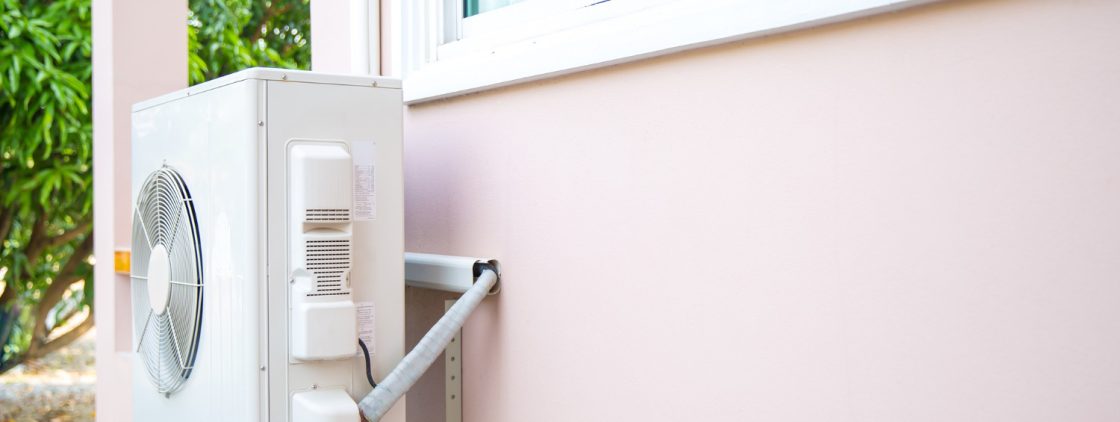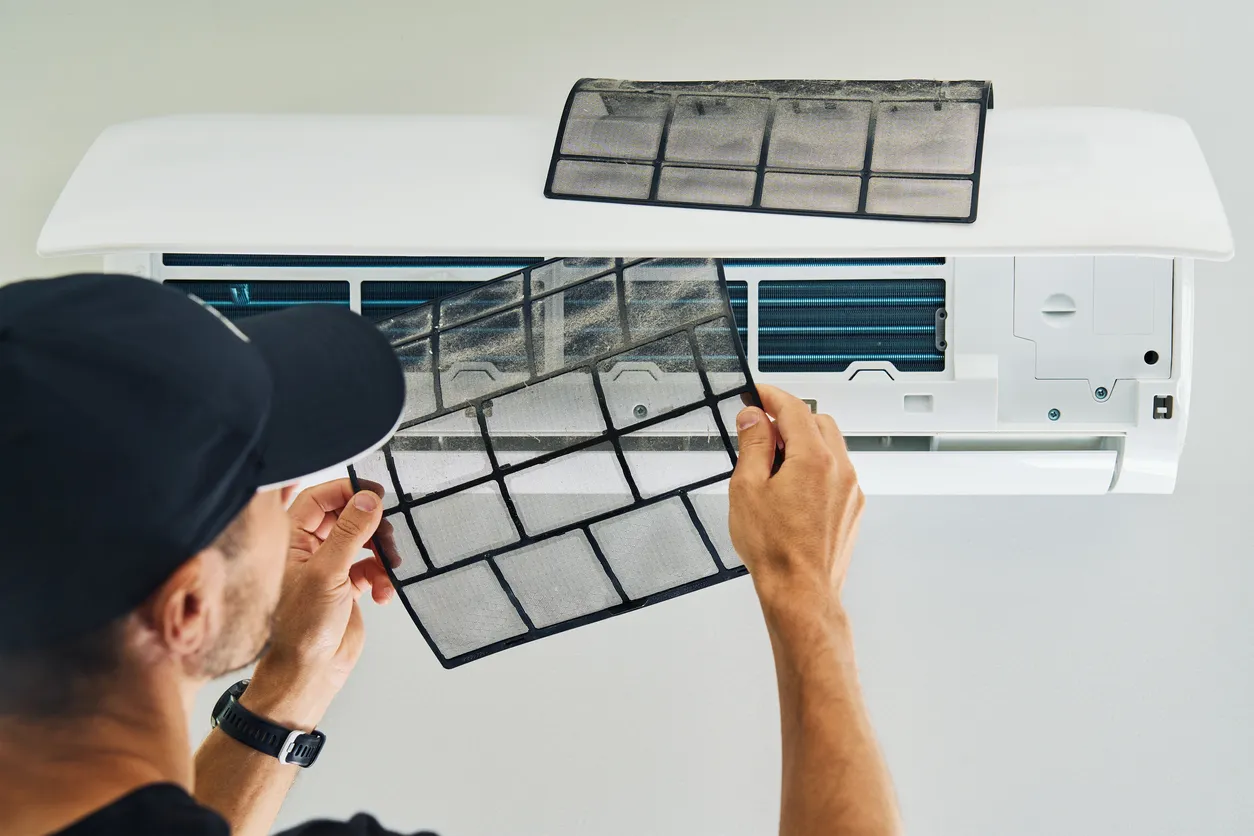Humidity plays a bigger role in home comfort than many homeowners realize. If the air inside your home feels clammy, sticky, or too dry—even when your HVAC system is running—it’s often a sign that something is off with humidity control. Unbalanced humidity can make rooms feel warmer or colder than they actually are and may even cause health issues over time. This becomes especially noticeable during Stafford’s long summer months when high heat and excess moisture in the air can quickly overwhelm an HVAC system that isn’t working properly.
For homeowners in Stafford, keeping humidity levels in check isn’t just about comfort. High indoor humidity can lead to mold growth, musty smells, and even damage to furniture or flooring. On the flip side, if the air gets too dry, it can lead to dry skin and respiratory irritation. Addressing humidity control problems early prevents larger issues down the road. This article outlines the most common humidity-related problems with HVAC systems and details ways to correct them so your home stays comfortable year-round.
Common Humidity Control Problems in HVAC Systems
When a home in Stafford has high or low indoor humidity, it’s usually the result of an imbalance between the HVAC system’s cooling activity and its ability to remove moisture from the air. While the air conditioner does help manage humidity to some degree, it’s not designed to handle all indoor air moisture problems on its own. That is where many issues begin.
Here are common problems that contribute to poor humidity control inside the home:
– Poor ventilation: Without a steady exchange of indoor and outdoor air, moisture builds up over time. This often shows up where airflow is weak, such as in closed rooms or basements.
– Oversized HVAC units: A unit that is too large cools the space quickly but cycles off before it can properly dehumidify the air. This leaves rooms feeling cool but still damp.
– Clogged air filters: When filters are packed with dust, air cannot move freely through the system. Restricted airflow builds moisture inside the ducts and leads to higher indoor humidity.
– Drainage issues: If the system’s condensate drain line is blocked, collected moisture doesn’t exit the system as it should. This not only raises humidity but can also lead to water leaks or mildew buildup inside the unit.
– Leaky ductwork: Ducts with holes or gaps in them suck in outside moisture and push it through your vents, worsening humidity levels in the home.
Each of these issues affects how comfortable your living space feels. One Stafford homeowner had a three-year-old HVAC system that seemed to cool their home just fine, but everything still felt damp throughout the day. After an inspection, it turned out their system was oversized and shutting off before it could remove moisture from the air. Adjustments were made to cycle timing and airflow, which helped stabilize comfort levels in a matter of days. Identifying the root of the problem is the key to solving humidity issues quickly.
Solutions for Improving Humidity Control
Addressing humidity problems begins with understanding how your HVAC setup handles air moisture. If your home in Stafford frequently feels too humid or too dry, a few adjustments can often bring relief. These changes improve airflow, adjust system performance, and support the right indoor climate.
Here are some solutions to improve indoor humidity regulation:
1. Replace or clean air filters regularly
Dirty filters block airflow and trap moisture. This causes humidity to rise. Replace filters every 1 to 3 months, depending on usage and household needs.
2. Install a whole-home dehumidifier or humidifier
In areas where moisture is naturally high, like Stafford in the summer, a dehumidifier tailored to work with your system helps maintain the right indoor balance. In cooler seasons with dry air, a humidifier can prevent overly dry environments.
3. Inspect system sizing and duct layout
If your current HVAC system is too large or too small for your home’s square footage, it may need adjustments. Systems that cycle too quickly or too slowly both contribute to incorrect humidification.
4. Check for faulty ductwork and poor ventilation
Air leaks and blocked vents reduce system efficiency. Resealing ducts and improving air circulation in unused or closed-off spaces helps even out conditions across the home.
5. Flush the condensate drain line
A blocked drain line backs moisture up into the system. Flushing it ensures water can leave the system properly, preventing higher-than-normal humidity.
All these steps work together to support an indoor environment that is not just cool but also comfortable and safe. Without proper attention to the system’s condition and sizing, HVAC systems can struggle to keep things balanced no matter how new or updated they are. Taking these actions helps improve efficiency and comfort, especially during Stafford’s warmer months.
Benefits of Professional HVAC Services
Humidity problems can be difficult to diagnose without a full system inspection. While some signs like dampness, condensation, or musty smells are clear indicators, the root cause is often hidden within the HVAC system. Our professionals know what to look for and understand how different parts of the system work together. With the right tools and skills, they can catch issues before they affect your comfort or cause bigger damage.
Professional maintenance checks help assess humidity levels, airflow, duct condition, refrigerant charge, and the performance of key moisture-control components. A clogged drainage line or worn-out blower motor might not be obvious to a homeowner but can throw off the balance that keeps indoor air comfortable. When these areas are inspected and cleaned or repaired as needed, the entire system works more efficiently.
Our technicians also verify that your HVAC system is properly sized and configured for your home. If your system is oversized or set up incorrectly, it may lead to high humidity or excess energy use. During a service visit, adjustments can be made to improve fan speeds, cycling patterns, and equipment settings to better match your home layout. These changes often help resolve ongoing discomfort linked to high or low humidity.
Our technicians also offer practical suggestions for rooms that frequently have issues—such as basements or bright sitting areas where air circulation and moisture balance can be harder to manage. If you have maintained your system but still feel uncomfortable, a professional inspection is often the next best step to take.
Preventive Maintenance Tips for Stafford Homeowners
Tackling humidity problems often starts by preventing them. Homeowners in Stafford can help maintain consistent indoor air quality by staying on top of routine HVAC upkeep.
Here are a few tips for preventing humidity control issues:
– Replace air filters routinely. Waiting too long can slow down your system and trap moisture in your ductwork.
– Keep vents open and unblocked. Furniture or rugs covering vents can reduce air circulation and lead to uneven humidity in rooms.
– Check the outdoor unit regularly. Clear away leaves, dirt, and other debris to keep airflow strong.
– Watch for early signs like window condensation, damp walls, or a musty smell.
– Schedule seasonal inspections to catch problems before humidity levels rise in summer.
Routine care helps your HVAC system perform better and extend its life. For example, one Stafford homeowner noticed mold behind a closet wall. It turned out that a vent had been blocked by a shelf, cutting off airflow to that part of the house. Removing the blockage led to a noticeable change within days.
Humidity control often comes down to small but important habits. Making regular checks and addressing airflow problems early keeps you a step ahead of larger issues during peak seasons.
Ensuring Comfortable Indoor Air in Stafford
Fixing humidity control issues starts with learning how your HVAC system is performing and spotting warning signs early. If your home feels too damp, sticky, or too dry and irritating, there could be an issue within the system that needs to be addressed. These problems affect more than comfort—they can impact furniture, walls, and overall air quality.
Good indoor air isn’t just about cool temperatures. Balanced humidity plays a big part in how your home feels day-to-day. Routine steps like changing air filters, checking vents, and maintaining dry drainage zones can go a long way in helping your system work correctly. Severe humidity swings or ongoing discomfort are signs that your system might need service.
When the time comes, getting HVAC service in Stafford from trained technicians can provide peace of mind. They will inspect your system, make needed changes, and help restore comfort throughout your home. A well-maintained HVAC setup will keep air quality healthy and humidity under control so your family feels good year-round.
If your home continues to show signs of unbalanced moisture, consider reliable HVAC service in Stafford from Weather Cool Inc to help maintain a consistently comfortable and moisture-free indoor environment. For a quick estimate or to book a service visit, please contact us today.




